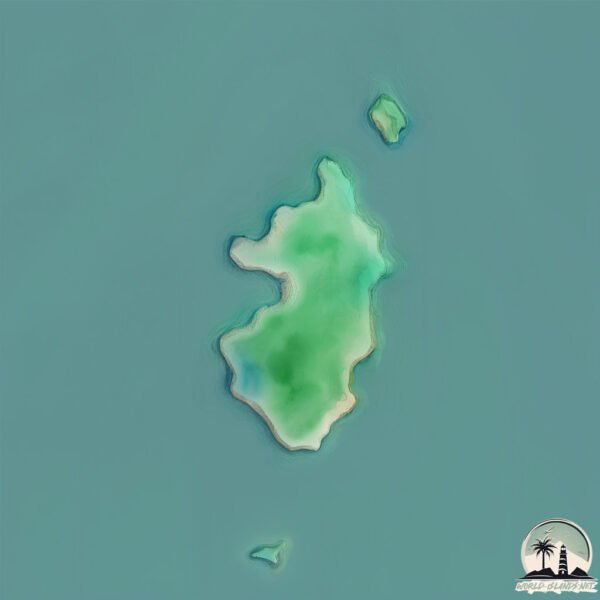Kakkuri

Welcome to Kakkuri, a Continental island in the Yellow Sea, part of the majestic Pacific Ocean. This guide offers a comprehensive overview of what makes Kakkuri unique – from its geography and climate to its population, infrastructure, and beyond. Dive into the details:
- Geography and Size: Explore the island’s size and location.
- Climate and Weather: Weather patterns and temperature.
- Topography and Nature: Uncover the natural wonders of the island.
- Infrastructure and Travelling: Insights on reaching, staying, and making the most of your visit.
- News and Headlines: Latest News.
Geography and size of Kakkuri
Size: 0.405 km²
Coastline: 4 km
Ocean: Pacific Ocean
Sea: Yellow Sea
Continent: Asia
Kakkuri is a Tiny Island spanning 0.405 km² with a coastline of 4 km.
Archipel: –
Tectonic Plate: Amur – A minor tectonic plate in the region of the Amur River at the border of Russia and China, involved in complex interactions with the Pacific and Eurasian plates.
The geographic heart of the island is pinpointed at these coordinates:
Latitude: 37.12877442 / Longitude: 126.0213669
Climate and weather of Kakkuri
Climate Zone: Continental
Climate Details: Monsoon-Influenced Hot-Summer Humid Continental Climate
Temperature: Hot Summer
Climate Characteristics: Hot summers with monsoon rains, contrasting with dry, cold winters. Typical of east Asian continental edges.
Topography and nature of Kakkuri
Timezone: UTC+09:00
Timezone places: Asia/Tokyo
Max. Elevation: 28 m
Mean Elevation: 24 m
Vegetation: Open Woodland
Tree Coverage: 64%
The mean elevation is 24 m. The highest elevation on the island reaches approximately 28 meters above sea level. The island is characterized by Plains: Flat, low-lying lands characterized by a maximum elevation of up to 200 meters. On islands, plains are typically coastal lowlands or central flat areas.
Dominating Vegetation: Open Woodland
Characterized by sparsely distributed trees with open canopy allowing sunlight to penetrate, supporting grasses and shrubs underneath. Often found in drier or transitional environments. Kakkuri has a tree cover of 64 %.
Vegetation: 4 vegetation zones – Diverse Island
Four distinct vegetation zones mark these islands as ecologically diverse. They might feature varied landscapes such as forests, beaches, grasslands, and rocky areas. Such diversity reflects the island’s complex ecological interactions and varied habitats, which can support a rich array of wildlife and plant species.
Infrastructure and Travelling to Kakkuri
Does the island have a public airport? no.
There is no public and scheduled airport on Kakkuri. The nearest airport is Incheon International Airport, located 60 km away.
Does the island have a major port? no.
There are no major ports on Kakkuri. The closest major port is DAESAN HANG, approximately 44 km away.
The mean population of Kakkuri is 75 per km². Kakkuri is Gently Populated. The island belongs to South Korea.
Continuing your journey, Deokjeokdo is the next notable island, situated merely km away.
If Katakuri ACTUALLY Played Roblox Blox Fruits

![One Piece Luffy vs Katakuri Conqueror's Haki Clash [1080p]](https://i.ytimg.com/vi/UNg3A8DCoxY/mqdefault.jpg)

South Korea is classified as Emerging region: MIKT: Mexico, Indonesia, South Korea, and Turkey – Economies recognized for their development potential and emerging market status. The level of income is High income: OECD.
News – Latest Updates and Headlines from Kakkuri
Stay informed with the most recent news and important headlines from Kakkuri. Here’s a roundup of the latest developments.
Please note: The data used here has been primarily extracted from satellite readings. Deviations from exact values may occur, particularly regarding the height of elevations and population density. Land area and coastline measurements refer to average values at mean high tide.
